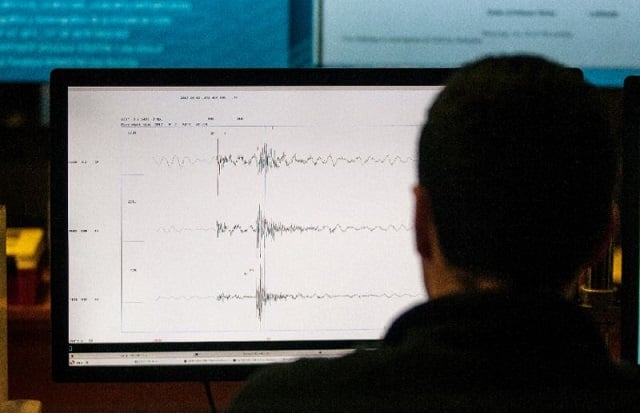
Aftershocks can be more destructive than the quakes they follow, making it all the more important for experts to be able to predict them.
But while seismologists have methods to forecast when aftershocks will hit and how strong they will be, there is more uncertainty about how to predict where they will strike.
Hoping to address that, a group of researchers trained a "deep learning" programme with data about tens of thousands of earthquakes and aftershocks to see if they improve predictions.
Earthquake of magnitude 6.4 strikes off east Indonesian island-USGS
"The previous baseline for aftershock forecasting has a precision of around three percent across the testing data set. Our neural network approach has a precision of around six percent," said Phoebe DeVries, co-author of the study published in the journal Nature on Thursday.
"This approach is more accurate because it was developed without a strongly held prior belief about where aftershocks ought to occur," DeVries, a post-doctoral fellow at Harvard, said.
The researchers used a type of artificial intelligence known as deep learning, which is loosely modelled on the way the human brain makes connections.
The programme allowed the researchers to map relationships "between the characteristics of a large earthquake the shape of the fault, how much did it slip, and how did it stress the earth and where aftershocks occurred," said Brendan Meade, professor of earth and planetary science at Harvard, and a study co-author.
The researchers tested the network by holding back a quarter of their data set, and feeding the remaining information into the programme.
Prepare for more quakes, warns PU scientist
They then tested how well the programme predicted the aftershock locations of the 25 percent of cases it hadn't been fed.
They found six percent of the areas the programme identified as high-risk did in fact experience aftershocks, up from three percent using existing methods.
Analysing the research, Gregory Beroza, a professor of geophysics at Stanford University, cautioned it "might be premature to infer... an improved physical understanding of aftershock triggering".
In an article published in Nature alongside the study, he said the research had focused on only one set of changes caused by earthquakes that can affect where aftershocks occur.
"Another reason for caution is that the authors' analysis relies on factors that are fraught with uncertainty," Beroza wrote.
Three dead as strong quake shakes Japan's Osaka
DeVries acknowledged that additional factors affect where aftershocks occur and that there is "much more to be done".
"We definitely agree that this work is a motivating beginning, rather than an ending," she said.
And Beroza said the research had established a "beachhead" for additional study into how artificial intelligence could help forecasting.
"The application of machine-learning methods has the potential to extract meaning from these large and complex sources of information, but we are still in the early stages of this process."






1732445375-0/Untitled-design-(9)1732445375-0-270x192.webp)


1732428810-0/Copy-of-Untitled-(3)1732428810-0-270x192.webp)
1732425487-0/BeFunk_§_]__-(42)1732425487-0.jpg)






COMMENTS (1)
Comments are moderated and generally will be posted if they are on-topic and not abusive.
For more information, please see our Comments FAQ